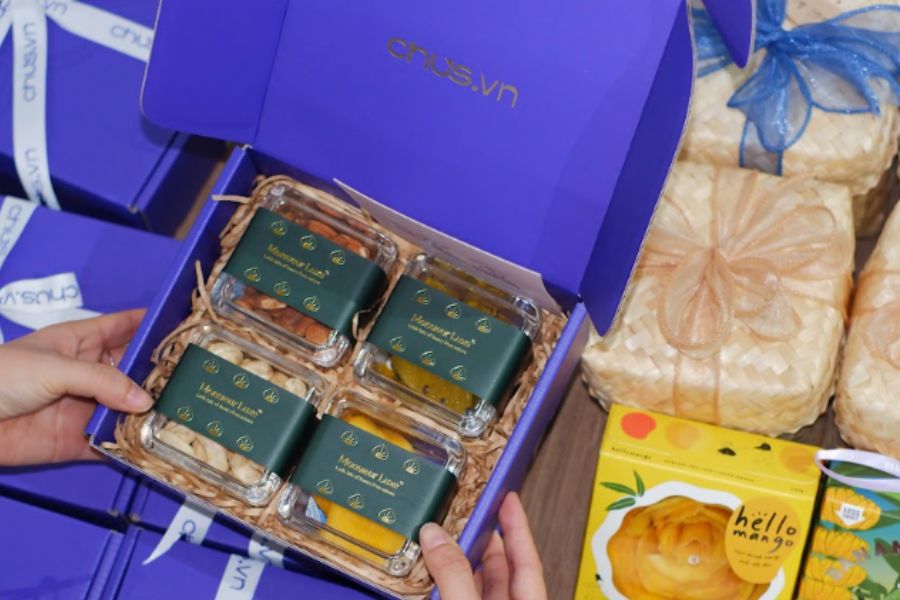- May 2, 2024
Ceramics In Special Occasions of Vietnam
Vietnamese ceramics, embodying the beauty and cultural essence of Vietnam, boast a rich history spanning millennia. Crafted by generations of artisans, these ceramics have become deeply intertwined with the nation's identity. Their presence extends beyond daily life, gracing major Vietnamese holidays with their cultural and spiritual significance. Delve into this fascinating world with CHUS through the following article!
With a presence stretching back to prehistoric times, ceramics permeate Vietnamese life, serving as both practical household items (bowls, plates, pots) and crucial construction materials and tools. Their high heat resistance, durability, and ease of cleaning make them ubiquitous in homes.
Beyond their material function, ceramics hold profound spiritual significance. Objects of worship, like incense burners and bowls, are often crafted from ceramic, reflecting the respect shown to ancestors. Decorative ceramics like vases and statues further enrich living spaces, creating a sense of warmth and richness.

Boasting a rich history, pottery has become deeply ingrained in Vietnamese culture, with renowned craft villages like Bat Trang and Thanh Ha fostering a tradition that has garnered international acclaim.
Vietnamese ceramics on major occasions
1. Vietnamese ceramics during the Lunar New Year celebration
During Tet, Vietnam's most significant holiday, ancestor worship holds immense importance. Ceramic items play a crucial role in these rituals, serving as incense burners, bowls, and elegant altar decorations that embody tradition.
Beyond their spiritual significance, ceramics also enhance family spaces with vases, statues, and other decorative pieces, creating a warm and inviting atmosphere. Careful selection and adherence to cultural patterns ensure these ceramic products remain a cherished part of Tet celebrations.

2. Ceramics in wedding
Wedding ceremonies often incorporate ceramic utensils like bowls, plates, and wine cups. These items not only serve the celebratory function but also symbolize appreciation and affection for the bride and groom when offered as gifts.
Additionally, ceramic mascots or figures of deities are employed to imbue the marriage with auspiciousness, signifying happiness and peace for the newlyweds. Similar to Tet celebrations, ceramics can also be used to adorn wedding festivities, reflecting the traditional beauty passed down through generations.
3. Ceramics in traditional occasions
Within Vietnamese festivals, pottery assumes a significant role in acts of ancestor and deity worship. The meticulous selection and decoration of incense burners, crane tops, incense bowls, and ceramic patterns serve as expressions of deep respect and reverence for the nation's cultural and spiritual heritage.

Decorative ceramics not only beautify the space but also help add a bustling and exciting atmosphere to festivals. These products are often used to decorate booths, gates and other highlights, with unique decorative patterns, imbued with cultural characteristics of each region, thereby expressing diversity and richness of Vietnamese culture.
Traditional ceramic making techniques
Clay forms the foundation of traditional pottery. Notably, Bat Trang artisans discovered a white clay mine, establishing it as their ceramic production center. This Truc Thon clay, a soft, gray-white material, offers high fire resistance but presents challenges: it contains iron oxide, shrinks during drying, and lacks natural whiteness.
To address these limitations, the raw clay undergoes a multi-stage soaking process in a four-tank system. This process breaks down the clay, allows for settling and impurity removal, and further drying and incubation to eliminate iron oxide and other impurities.

In the next step, the artisans shape the product by hand on a turntable, often employing the 'swipe your hand, bleat' technique. The soil is meticulously crushed and smoothed to achieve the desired form. After being shaped, the product needs to be dried so that it is dry and does not crack.
The products are then "aged" and revised to perfection. Depending on decorative requirements, the product can be filled with additional soil to create relief shapes or deeply engrave decorative motifs.
Preserving and developing the quintessence of Vietnamese ceramics
Trải qua thăng trầm thời gian, những nốt thịnh, suy, song nghề làm gốm vẫn được giữ gìn và phát triển cho đến ngày hôm nay. Các nghệ nhân làng gốm vẫn cần mẫn thổi hồn vào từng sản phẩm, mang tinh hoa Việt vươn ra quốc tế. Ngày nay, sản phẩm gốm Việt không chỉ đa dạng về chủng loại từ gốm thô đến những đồ trang trí tinh tế, mà còn tiến bộ với công nghệ sản xuất hiện đại.

Despite historical fluctuations, Vietnamese pottery continues to thrive, with artisans meticulously crafting diverse ceramic products, from everyday items to delicate decorative pieces. Modern technologies like heat printing ensure durability and safety, while upholding the tradition of Vietnamese craftsmanship.
This evolution allows Vietnamese ceramics to cater to both local and international markets, showcasing their rich cultural essence. Bat Trang pottery village exemplifies this development, seamlessly blending traditional designs and ancient enamel techniques with contemporary innovations, resulting in high-quality products that resonate with global audiences.
Conclusion
From ancient times, Vietnamese ceramics have held profound significance, deeply woven into the soul, spirituality, and cultural fabric of the nation. With ongoing advancements in techniques and the talent of younger generations, Vietnamese ceramics are poised for further global recognition. Join CHUS to explore the beauty of these traditional products and rekindle appreciation for them among the youth.










